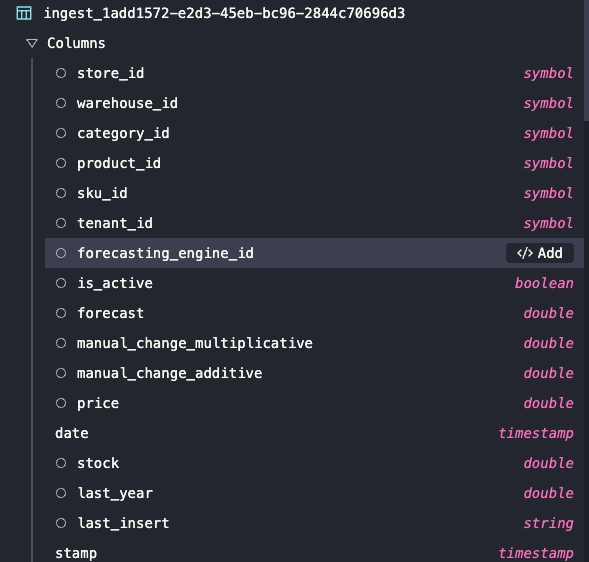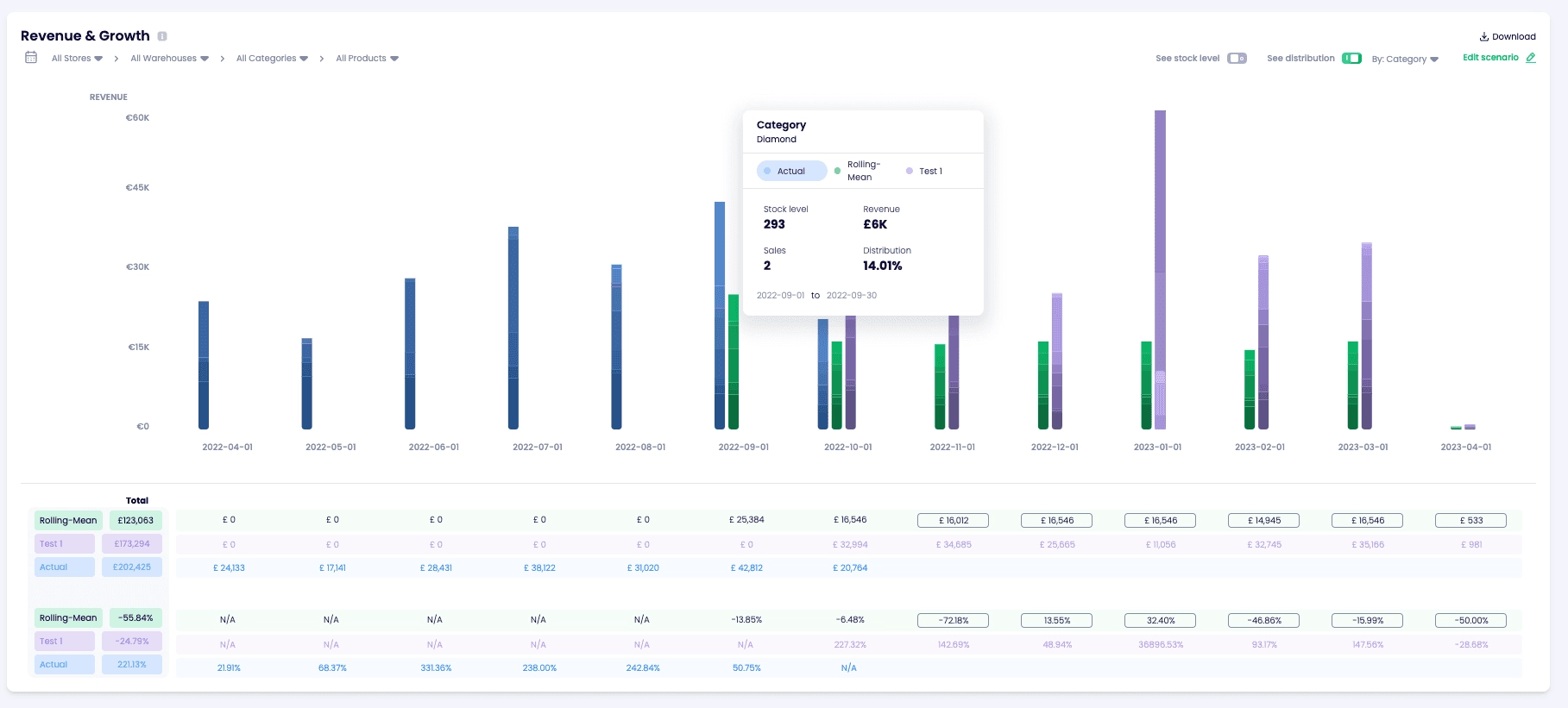Case Study
Prediko leverages QuestDB for fast analytics and forecasts
Prediko uses QuestDB to provide fast analytics and forecasts to their e-commerce customers.
- Real-Time Analytics
- Provides brands with an Inventory Operating System for seamless forecast, planning, ordering, and finance.
- Efficient Querying
- Fetches, aggregates, and updates data quickly and easily.
- Predictive Power
- Helps businesses with SKU management strategies to minimize waste.

- Avg ingested rows/sec
- 3M+
- Write speed vs InfluxDB
- 10x
- Compression ratio
- 6x
- Cloud up-time
- 99.99999%

SKU at scale
Time-series data, handled
The founders of Prediko identified a market gap for e-commerce and omnichannel businesses that lack inventory analytical capabilities. With QuestDB, they developed an Inventory Operating System that offers forecasts, plans, and order predictions.
- Real-Time Monitoring
- QuestDB enables Prediko to process millions of data points instantly for their e-commerce clients.

“At Prediko, we need to give our customers a platform to digest, manipulate, and aggregate millions of data points in milliseconds. QuestDB stands up to and surpasses our requirements, with the ease of use SQL provides.”
SELECTcoalesce((forecast + manual_change_additive)* manual_change_multiplicative, 0) * price* cast(is_active AS int) AS forecast,coalesce((forecast + manual_change_additive)* manual_change_multiplicative, 0) * cast(is_active AS int) AS units,last_year * price AS last_yearSAMPLE BY 1M ALIGN TO CALENDAR
SQL, clean and simple
Time-series extensions for precise queries
Prediko creates powerful dashboards with familiar-yet-powerful SQL. Time-series extensions like SAMPLE BY empower the query on the left, while UPDATE in the query below is a developer favourite. Updating inventory predictions is very easy, and both provide superior query speed.
WITH prediction_update AS (
SELECT
COALESCE(
SUM(forecast * manual_change_multiplicative) * 0.4519271611197119,
0.0
) AS bump,
sku_id,
warehouse_id
FROM
'read_48f5fda8-3f9a-425c-9584-045d8a3e5dc5_410fa30d-b95e-4463-81df-63e72042146c'
WHERE
date >= '2023-01-01'
AND date < '2023-02-01'
AND category_id IN ('4850b9e0-2019-46d9-a50b')
)
UPDATE
'read_48f5fda8-3f9a-425c-9584-045d8a3e5dc5_410fa30d' draft
SET
stock = CAST(stock + prediction_update.bump AS double)
FROM
prediction_update
WHERE
draft.sku_id = prediction_update.sku_id
AND draft.warehouse_id = prediction_update.warehouse_id
AND prediction_update.bump != 0.0
AND draft.date >= '2023-01-01'
AND category_id IN ('4850b9e0-2019-46d9-a50b-')
Clean data, accurate predictions
Real-time SKU predictions
Prediko uses QuestDB for accurate SKU predictions and inventory forecasts.

- Data deduplication
- Clean data-in with dedup prevents predictive errors.
- SQL Simplicity
- Query and update predictions using SQL.
- Prediction Power
- Speed and effiency are key. Aggregate by the millions.
Prediko's Inventory OS
Predictive Analytics Made Easy
With QuestDB, Prediko helps businesses seamlessly manage and plan their inventory with accurate SKU predictions.
“We did a benchmark amongst TimeScaleDB, Apache Druid, and QuestDB. Our queries aggregated various SKUs and fetched the latest version of prediction. QuestDB stood out immediately from this benchmark: it completed test queries in just over one second, while similar queries took 4 seconds and 3 seconds for TimescaleDB and Apache Druid, respectively. ”
